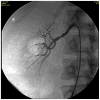The treatment of hypertension during pregnancy: when should blood pressure medications be started?
- PMID: 24057769
- PMCID: PMC3859314
- DOI: 10.1007/s11886-013-0412-0
The treatment of hypertension during pregnancy: when should blood pressure medications be started?
Abstract
Hypertensive pregnancy disorders (HPD) are important causes of maternal and fetal morbidity and mortality worldwide. In addition, a history of HPD has been associated with an increased risk for maternal cardiovascular disease later in life, possibly because of irreversible vascular and metabolic changes that persist beyond the affected pregnancies. Therefore, treatment of HPD may not only improve immediate pregnancy outcomes, but also maternal long-term cardiovascular health. Unlike the recommendations for hypertension treatment in the general population, treatment recommendations for HPD have not changed substantially for more than 2 decades. This is particularly true for mild to moderate hypertension in pregnancy, defined as a blood pressure of 140-159/90-109 mm Hg. This review focuses on the goals of therapy, treatment strategies, and new developments in the field of HPD that should be taken into account when considering blood pressure targets and pharmacologic options for treatment of hypertension in pregnant women.
Conflict of interest statement
Dawn C. ScantleburyGary L. Schwartz, Letitia A. Acquah, Wendy M. White, and Marvin Moser declare that they have no conflict of interest.
Vesna D. Garovic has patents filed, but not licensed.
This article does not contain any studies with human or animal subjects performed by any of the authors.
Figures


References
-
- Report of the National High Blood Pressure Education Program Working Group on High Blood Pressure in Pregnancy. Am J Obstet Gynecol. 2000;183(1):S1–S22. - PubMed
-
- Dolea C, AbouZahr C. Evidence and Information for Policy (EIP) World Health Organization; 2003. Global burden of hypertensive disorders of pregnancy in the year 2000. http://www.who.int/healthinfo/statistics/bod_hypertensivedisordersofpreg....
-
- Wallis AB, Saftlas AF, Hsia J, Atrash HK. Secular trends in the rates of preeclampsia, eclampsia, and gestational hypertension, United States, 1987–2004. American Journal of Hypertension. 2008;21(5):521–6. - PubMed
Publication types
MeSH terms
Substances
Grants and funding
LinkOut - more resources
Full Text Sources
Other Literature Sources
Medical

